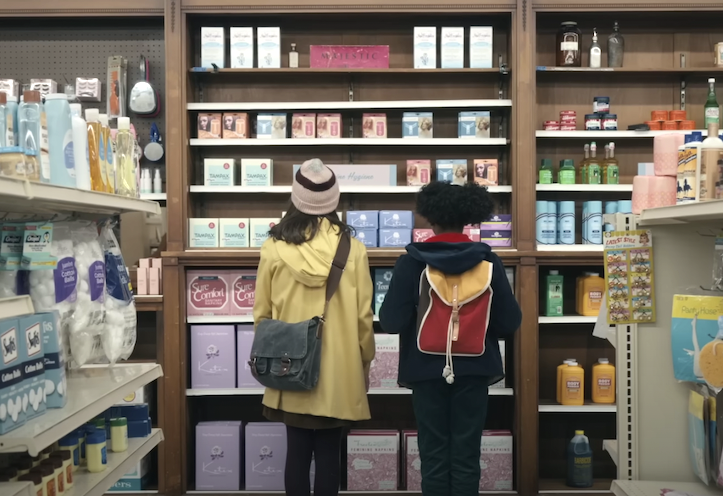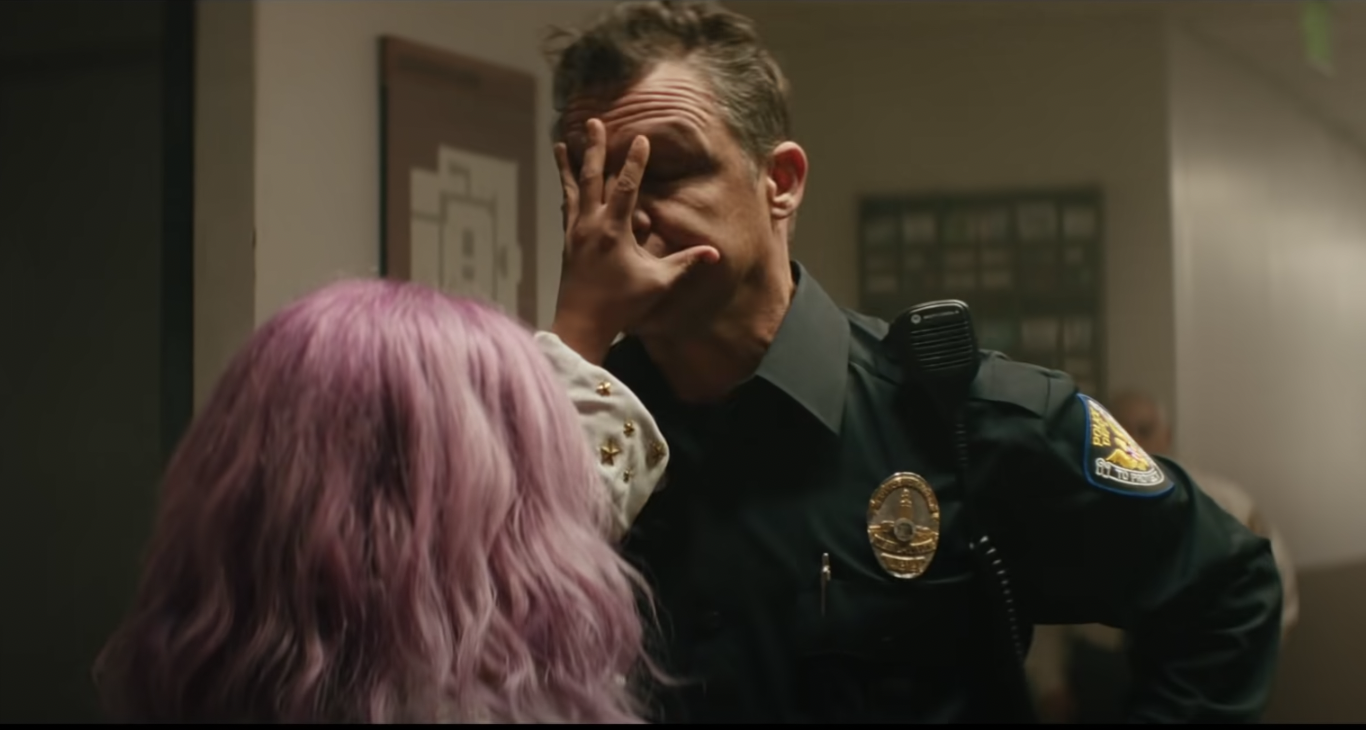Books & Culture
Woody Is the Toy Uncle Tom and Other Lessons From a Lifetime of Children’s Movies
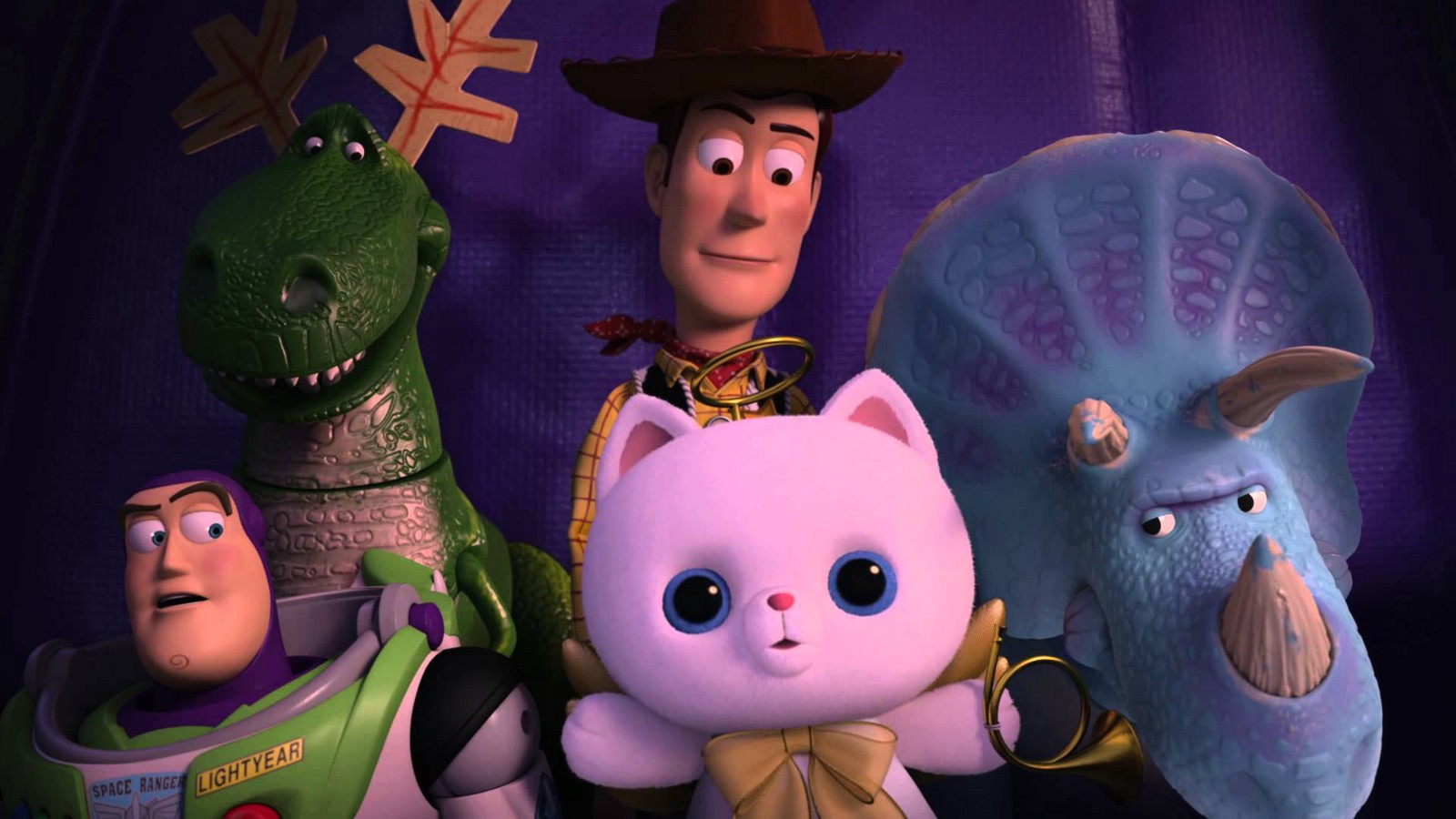
At our house you get points for speaking in movie lines.[1] Since my daughters are still technically “children,”[2] we have a limited pool to draw from, basically kids’ flicks, plus a handful of extras.
Let’s say I ask one of the girls to move her puzzle pieces off the middle of the living room floor, since people and sundry pets often walk there and whose fault is it going to be when pieces end up missing from her game. Say my daughter refuses, loudly, dramatically, bloviating at length on how life is so totally unfair. I will struggle, and fail, to empathize in such a situation. How bad can your life be when it’s entirely made up of variations on the dual themes of having everything anyone could ever possibly want and being a royal pain in my ass? But instead of explaining, even more loudly and amid a profusion of hand gestures, why she owes me an occasional favor given that I am her father who gave her life and clothes her and feeds her and wiped her butt, for God’s sakes, for years on end, several times a day, not that long ago, I will simply say “Thank you for nothing, you useless reptile.”[3] My daughter will smile and, while cognizant of the reproach implicit in the statement, will feel the warmth of unthreatening intimacy that I am gifting her, and then she’ll turn around and still do whatever she damn pleases.[4]
[1] Not points as in you-win-the-House-Cup points, but the metaphorical kind, as in the shared but unspoken tally that modulates the interactions of people who spend a lot of time together.
[2] At eleven and eight (or so), according to the child development experts, they are in “latency,” which is basically the stage between little kid and teenager, but which is latent only outwardly, in that puberty is not yet visible in their bodies but very much happening. This is supposed to be the best time to be a parent, the lull between the bewildering endlessness of taking care of a baby who might roll off a couch, then a toddler who might trip down the stairs, then a preschooler who might jump out a window, and the emotional fracturing that dealing with an adolescent is guaranteed to cause.
And they’re great, my kids, they really are. Smart, healthy, loving, alive little things for whom Mommy-Daddy-me-and-oh-yeah-her is still the core of everything. They’re not so great with each other, understandably. That’s what happens when the PTB pick your roommate for you. They also often display, ahem, “deficiencies in the regulation of affective states,” as the wise ones say. Still, when I remember myself as a teenager, I shudder at what the future has in store. And I usually restrict myself to picturing best-case scenarios.
[3] That’s Jay Baruchel as Hiccup in How to Train Your Dragon. A favorite.
[4] And then there will be yelling and hand gesturing. I’m no saint.

Or say I’m reading on the couch and a child-shaped meteorite suddenly blocks my line of sight and makes my heart do a cartwheel. She’ll yell “It just be raining black people in New York!”[5] and then slip away as I try to catch my breath. Or say I’m in the kitchen and I ask my wife, depending on how the day went, whether she wants a peeled-and-sliced kiwi or some banana topped with ice cream topped with peanut butter topped with whipped cream topped with hot fudge and sprinkles. She’ll respond by bellowing “Anybody want a peanut?,”[6] which will inevitably lead to twenty minutes of Inigo and Vizzini and Miracle Max impersonations.
The dream, we all agree, is to communicate entirely through quotes, our borrowed-but-private, secret-but-not-weird-secret language.
I’m not blind to the potential pitfalls of continuous, perhaps even compulsive, film watching. Movies, to begin with, are commodities, the result of profit seeking as much as artistic vision. American movies in particular are designed to motivate consumption beyond the viewing experience, what with tie-in toys and merchandizing and novelizations and TV serializations and sequels and prequels and re-releases and reboots and adaptations for the stage and the ice and Halloween costumes and all the rest. I’m embarrassed to tell you how many objects in my house bare the visage of Elsa from Frozen.[7]
The dream, we all agree, is to communicate entirely through quotes, our borrowed-but-private, secret-but-not-weird-secret language.
[5] That’s Will Smith as Officer James Edwards in Men in Black, which, despite containing some PG-level forays into race relations and adult sexuality, and the occasional cuss word, I have deemed perfectly safe for children as young as six and my kids totally love it.
[6] That, obviously, is the incomparable Andre the Giant as Fezzik in The Princess Bride, only the most quotable movie ever. If I was in charge of the world I would make it a criminal offense not to introduce children to The Princess Bride as soon as they’re old enough to sing the Alphabet Song. You think they can’t handle the torture scene? Watch what Gru goes through trying to sneak into Vector’s lair and then we can talk.
[7] I’m also embarrassed to tell you about my awesome collection of Lego minifigs, including some choice hard-to-find items such as a custom-made Admiral Ackbar figurine that I’m not going to tell you how much I paid for. I keep them in sealed Ziplock bags and specially designed display shelves, just like Will Ferrell’s dad character in The Lego Movie. Here’s your pants. Show’s over.
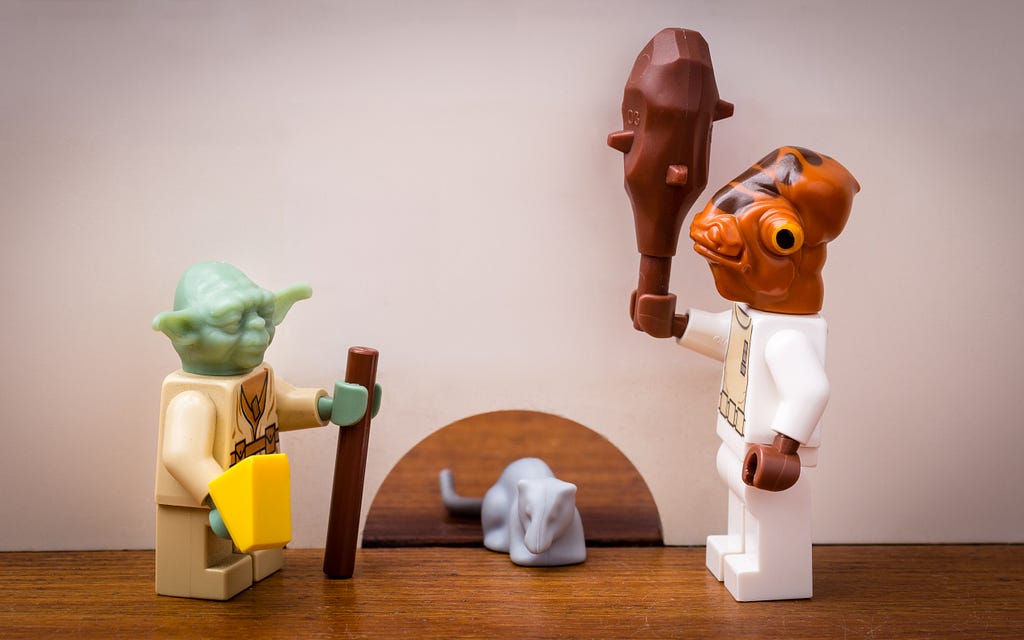
Then there are the effects on my kids’ precious psyches, which, since watching Inside Out multiple times, I can’t help but think of as the Grand Canyon with high-tech command stations run by talking jellybeans. Movies have the power to shape them (my kids, not the jellybeans) in profound, irretrievable ways, psychologically,[8] politically,[9] sexually.[10] My daughters being daughters, I also have to be concerned about gender-role socialization and heteronormativity and the patriarchy and all that shit.[11] And don’t even get me started on all the murders and dead parents.[12]
[8] All parents should spend several hours a day reading academic papers about the effects of media on their children’s psyches, as soon as they’re done watching The Princess Bride. I’m a sucker for cutesy titles such as “Look Out New World, Here I Come!: Race, Racialization, and Sexuality in Four Children’s Animated Films by Disney, Pixar, and Dreamworks,” and “Am I Too Fat to Be a Princess?: Examining the Effects of Popular Children’s Media on Young Girls’ Body Image,” and, my favorite, “Pass the Popcorn: Obesogenic Behavior and Stigma in Children’s Movies.” Or, as Peter O’Toole’s Anton Ego would put it: “I don’t like food, I llllllove it. If I don’t lllllllove it, I don’t sw-WA-looooow.”
[9] Did you know The Incredibles is an Ayn-Randian parable about the dangers of welfare-state mediocrity? Did you know Despicable Me encourages Satanism? Did you know The Lion King is soaked in proto-fascist imagery? Did you know The Iron Giant is anti-gun propaganda, Happy Feet is environmentalist propaganda, Astro Boy is Marxist propaganda? Did you even see Astro Boy? It’s a film adaptation of the Japanese TV show adaptation of the manga books from the 1950s about a child-shaped android created as a Pinocchio/Galatea for a government scientist who then becomes a crime fighter (the android, not the scientist). It’s awful. And Marxist.
Did you know The Incredibles is an Ayn-Randian parable about the dangers of welfare-state mediocrity? Did you know Despicable Me encourages Satanism?
[10] I’m not talking about the “subliminal” pornographic messages rumored across the Internet to be embedded in Disney movies. You know, a mysterious voice says “take your clothes off” in the middle of Aladdin and the undersea palace in The Little Mermaid looks like a giant penis. First of all, if you can see it it’s not fucking subliminal. Second of all, those are all ridiculous myths concocted by dirty-minded morons. The only true one is the one about the topless painting in The Rescuers. Having said that, there is something a little sinister about, say, Disney’s obsession with bondage. I mean it. Watch Peter Pan, Sleeping Beauty, Aladdin, The Hunchback of Notre Dame, Hercules, and Tangled in succession and tell me I’m making it up. If you have the time, google “kenneti disney dungeons.” You’ll thank me, I hope.
[11] There are the old-timey handsome-prince-true-love’s-kiss-beautiful-but-helpless-damsel inanities of Snow White and Cinderella and Sleeping Beauty to combat, but also the third-wave pseudo feminism of The Little Mermaid and Aladdin and Mulan and the post-culture-wars-post-Sex-and-the-City compromises of The Incredibles and Tangled and Maleficent to unpack. And what is up with Elsa’s transformation from Frigid Elsa to Sexy Elsa in the middle of “Let It Go”? And what is up with male heroes looking different and female ones all looking the same? Do yourself a favor and google “gianna tumblr sameface syndrome.”
[12] Nobody has satisfactorily explained to me why so many children’s stories involve death, especially parental death. You would think children would hate such stories, not drag their parents to the theater half-a-dozen times and then pester them to pay $39.99 for the DVD when they could just as easily stream the thing. But no. They witness in utter and all-too-real horror as Nemo’s mother and seventy-eight million of his siblings are eaten by a barracuda, and seconds later are completely entranced by the question of whether Nemo’s going to get to go to school. It’s like magic.
Nobody has satisfactorily explained to me why so many children’s stories involve death, especially parental death.
Are we happy that kids can do this? It must be developmentally okay, since I have the death of Bambi’s mother securely stored in my long-term memory shelf, immediately followed by Thumper saying “He doesn’t walk very good, does he?,” and I turned out relatively well adjusted. Anyway, parental death was already a staple of the Grimm’s tales and of myths and legends the world over, though why this was necessary I can’t fathom. It can’t have been easy in the olden days to reach the age of five without having been exposed to, like, actual death.
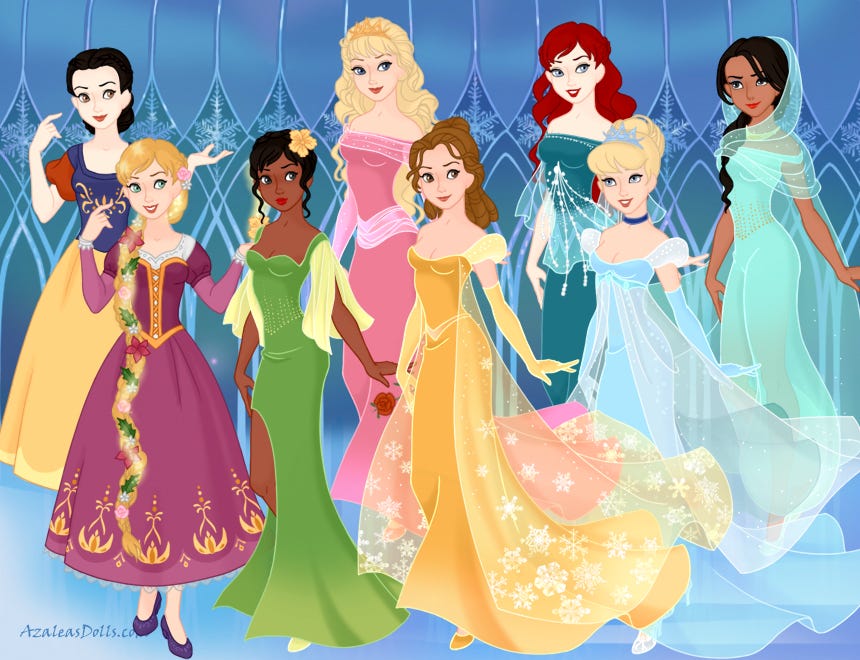
And yet, despite the psychological risks and the brainwashing and the merchandizing, I still think it’s worth it. Just for the laughter it’s worth it. My family and I hunt especially for the throwaway line, the one that does not advance the plot but is only there because the movie gods have decreed this is a propitious moment for you to laugh. Like when a ten-year-old girl hand-fashioned in clay blurts out “Go ahead, eat me! I’m sure I’m delicious!”[13] Laughter is that rare thing that both feels good and is unambiguously good for you. I never ever take for granted what, say, Kung Fu Panda or Chicken Run can do for a person, young or old, in the good-humor department.[14]
Movies are such concentrated experiences. In a couple of hours (usually less for G and PG fare) a movie throws at you both a world and a three-act full-on story set in that world. If it is at all effective, you absorb it, then become immersed, then become invested. This is true even of mediocre outings like Thumbelina or Cars. Human beings are story-loving creatures and there’s been enough said about that. A novel offers a more complex and sophisticated narrative experience, but who has time for that?,[15] and anyway it will take days or weeks to read. A film is consumed in a few bites, but somehow crams into those bites an astonishingly vivid visual experience[16] plus beautiful music plus humor and action and drama all rolled in together plus, in many cases, satire and social commentary. And I can discuss all of these things with my wife or my friends or my kids immediately after the viewing experience and then watch the whole thing over again and still not have exhausted an entire afternoon.[17]
[13] That’s Elle Fanning as Winnie Portley-Rind in The Boxtrolls, the only movie I’ve ever seen in which the villain gets his comeuppance by cheese-allergy-induced explosion.
[14] That laughing is a good thing is one of the few things everybody in the world ever has and will forever agree on. The Bible is pro laughter, “A merry heart is like medicine,” and so is the Koran, “He deserves paradise who makes his companions laugh.” Lao Tse recommended that we laugh at everything and Plato said even the gods love jokes. As Catelyn Stark says in A Game of Thrones, “Laugher is poison to fear.” Doctors love laughter too, because it’s a painkiller and helps prevent heart attacks and cancer. Seriously, google it. When you have something that appeals to Jesus and George R.R. Martin and the Surgeon General, you know you have something.
Of course not all comedies are funny. I once sat through the entirety of Madagascar III in a theater packed with children and their parents and at no point did anyone laugh at anything that was going on onscreen. The only funny moment, Chris Rock’s Marty the Zebra dancing and singing “TA TA TARARARARA TA TA CIRCUS! TA TA TARARARARA TA TA AFRO!,” had been given away by the trailers.
[15] I once met an adult woman who, being of sound mind and in full use of her faculties, told me her favorite movie was Taken 2.
[16] The best animators are master world-makers. A recent favorite at my house was Big Hero 6’s San Fransokio, half San Francisco, half Tokyo, half superhero anime, half Boy Meets World (although now it’s Girl Meets World).
If you don’t love the Cat Bus, I honestly don’t know what’s wrong with you.
But you have to look elsewhere in the world, expand your movie horizons, to find true originality. Hayao Miyazaki seems to be able to invent new colors, and has no interest in borders, between red and blue, between the city and the country, between fantasy and reality, between wakefulness and sleep. Also, if you don’t love the Cat Bus, I honestly don’t know what’s wrong with you.
In a totally different vibe, Tomm Moore’s The Secret of Kells and Song of the Sea look like some discarded South Park cutouts fell into Van Gogh’s brain.
[17] My youngest daughter still wants to watch Mulan and Pocahontas over and over. This drives my eleven-year-old crazy even though she emerged out of this stage only recently. But it’s not just a kids’ thing. I’ve seen The Shawshank Redemption approximately nine hundred and sixteen times. I once saw it twice back-to-back. Why? Maybe because I’m Irish, but also because I love it and I like to be around things that I love.
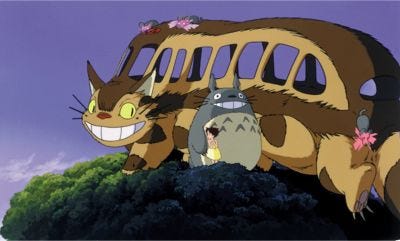
And that’s just movies in general. The really good ones are as fulfilling as great works of art in any other medium, illuminating, perplexing, immediately gratifying, elusively sophisticated, both mind-expanding and soul-expanding. Don’t believe for a second the stereotype that kids’ movies are all the same.[18]
These are corporate products, intended to appeal, literally, to all the children in the world.
Yes, there are lots of conventions that must be adhered to. The overwhelming majority emphasizes “family values” like honesty, generosity, and loyalty. They always[19] take place in morally just worlds, in which “good” characters triumph and are rewarded and “evil” characters are both defeated and humiliated. Parental deaths suck, but they are invariably the catalyst for the main character’s coming-of-age-metamorphosis, as are the onscreen deaths of mentors such as Obi-Wan Kenobi, Dumbledore, and Oogway the Turtle.[20] Yes, children’s movies peddle the infallibility of “believing in yourself,” even when such a sentiment makes no sense in the context of the story.[21] But how can they not? These are corporate products, intended to appeal, literally, to all the children in the world. They are so successful at it because they understand children, and children, especially young children, are the same everywhere.[22]
[18] Take AntZ and A Bug’s Life. Granted, neither is a masterpiece, but it’s amazing how two films released at around the same time and having essentially the same plot (misfit ant starts out mocked and shunned by all but eventually saves the entire colony and wins the love of the beautiful ant princess) and the same message (be brave, follow your heart, be yourself, and everything will work out for you and everyone else, except for the bad guys, of course) will go about it in such dramatically dissimilar ways.
AntZ constructs a brown-and-orange world of claustrophobia and cynicism, voiced by some of its era’s biggest box-office draws: Sharon Stone, Sylvester Stallone, Jennifer Lopez, Gene Hackman. It’s half driven by the personality of its star (Woody Allen) and half by an inexplicable desire to channel Full Metal Jacket into an animated comedy. One sight gag involves a soldier so badly wounded only his head is left. A Bug’s Life is all blues and greens and joyful eccentrics doing their thing: Dave Foley, Kevin Spacey, Julia Louis Dreyfus, Phyllis Diller, and on and on. Happy-happy and totally forgettable.
[19] Okay, almost always. Have you seen Miyazaki’s Howl’s Moving Castle? That thing is to children’s movies what Cranberry Redbull is to cranberry juice.
It’s derivative, but derivative is the point.
[20] And Gandalf. They’re all Gandalf. And Tolkien ripped Gandalf off from medieval stories and Viking sagas. Everybody loves a good father figure dying. It’s derivative, but derivative is the point.
[21] If you want to see a particularly egregious example, watch the straight-to-video Mulan II sometime. Better yet, don’t. It’s awful.
[22] Yes, I know, animated movies are Western products built by Western minds for Western interests. Yes, I know they are racist and heteronormative and pro-capitalist and in all probability edited in the presence of government operatives wearing dark glasses and earpieces. But you can’t deny their popularity. They are universally appealing. They just are.
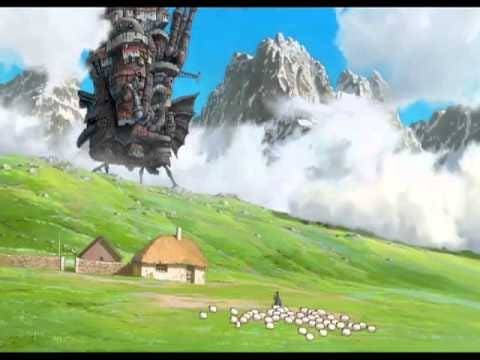
Ironically, this enforced conventionality, born of financial decree, this almost infrangible predictability, allows for clever filmmakers to work in complexity along the edges, to challenge viewers’ expectations and force them, at least the more attentive ones, to think. I’m not talking about trying to sneak some hidden message into unwary minds. It’s the other way around. The good ones want you to notice. As long as they aren’t too obvious about it, they can get away with a lot, precisely because parents and kids see their creations as pre-approved, and therefore harmless, entertainment. Because of this I think of the best children’s movies not only as art, but also as immensely powerful philosophical and pedagogical tools, as great art, in other words.
Ironically, this enforced conventionality allows for clever filmmakers to work in complexity along the edges, to challenge viewers’ expectations and force them, at least the more attentive ones, to think.
Say my daughters notice me giving a dollar to a homeless man. They want to know why I gave him money, and why then I don’t give money to all the other homeless people, and maybe I’ll talk about fairness and serendipity and the fickle alliance between your moral compass and your emotions, and then we’ll really get into it, for how is it fair that little Nancy has a pony and her father drives a Maserati and we just have a Prius and a cat who scratches the furniture, and how is it fair that we drive a Prius but little Natalie’s mom lost her job and they had to sell their car and the teachers are requesting donations so they won’t get evicted from their apartment, and how is it fair that there are millions of people around the world who don’t have anything at all to eat but everybody’s worried that poor people in America are too fat?
So I’ll steer the conversation towards Wall-E. The one with the robot.[23] Wall-E hits all the conventional buttons: self-discovery,[24] love,[25] friendship, family, loyalty, the works. (I’m assuming you’ve seen Wall-E. If you haven’t, please refer to the analog hyperlinks, aka footnotes). But the story boasts some glaring plot holes and contradictions. Based on no evidence other than my own reading of this bodaciously excellent film, I choose to assume these are deliberate challenges, placed there by artists with something real to say struggling against the straightjacket of cliché.[26]
[23] The world is barren and brown and covered in trash. Humanity has escaped to the stars and lives in tranquil comfort in a giant cruise liner called the Axiom. All human needs are met by an inexhaustible supply of robots, each of which follows a specific “directive” — its raison d’être — and is designated by an acronymic combination of letters that can also be pronounced as a cute and merchandizable name. All of them were created by Buy N’ Large, the very same private conglomerate that was responsible for the overconsumption that led to global catastrophe. Wall-E is the last functioning cleanup robot from the army of identical garbage-bots that were left behind on Earth to deal with the mess. Wall-E is alone and lonely until he meets Eve, a kick-ass babe who can fly and shoot lasers from her arms and looks like an iPhone. Eve’s directive is to find growing vegetation on the surface, but she is quickly taken in by the Chaplinesque garbage-bot and they fall in love. They eventually end up on the Axiom, where human beings have languished and expanded into helpless blobs under the well-meaning attentions of their mechanical caretakers. Nominally in charge is the ship’s human Captain, whose name is never spoken but is, according to the Internet, B. McCrea.
Shockingly, following a series of exciting and hilarious adventures, Wall-E and Eve team up with the Captain and together they save the human race, return to Earth to rebuild the world, and live happily ever after. The key to mankind’s salvation, it turns out, was a little wisp of a plant, which Wall-E found on Earth and gifted to Eve. The plant, a symbol of the Earth’s capacity for rebirth and of man’s yearning for nature, adds an always-timely environmentalist slant to the proceedings.
[24] Although I love Wall-E, I remain pissed off at the misleading marketing campaign that preceded its theatrical release. The trailers implied that Wall-E developed “a personality” and human-like emotions after his (he’s definitely a he) long sojourn of solitude. In fact, all the robots in the film have personalities and are human-like in most ways. Isaac Asimov wrote somewhere that there are only two kinds of robot stories: “robots as threat” and “robots as pathos.” Wall-E is neither, because it’s not a robot story at all.
Why is it that American fiction abounds with unattractive loser men who somehow lure gorgeous, extraordinary women into marrying them?
[25] Why is it that American fiction abounds with unattractive loser men who somehow lure gorgeous, extraordinary women into marrying them? Eve, the perfect girl who literally falls from the sky, is magically won over, as they always are, because Wall-E is sensitive and makes her laugh and that’s all women really want after all. When they get older and bring this up, I’ll ask my daughters to guess the ratio among screenwriters between unattractive loser men and gorgeous, extraordinary women.
[26] Consider a small, blink-and-you’ll-miss-it moment. The protagonists are watching an old video in which the President of Buy N’ Large (played by Fred Willard) is welcoming Earth’s refugees to the Axiom, when he throws out this little tidbit: “due to the effects of microgravity you will experience some… uh… slight bone loss.” The screen shows a graphic of ballooning bodies supported by disintegrating skeletons. The moment passes and is forgotten. Except that, now that this has been established, it makes it impossible for humanity to return to Earth after several generations and five hundred years on the ship. Keeping this in mind, you might be forgiven for screaming, after the credits begin to roll, “It’s not a happy ending at all! They’re all going to die!” I can neither confirm nor deny that I did this when I saw it for the first time.
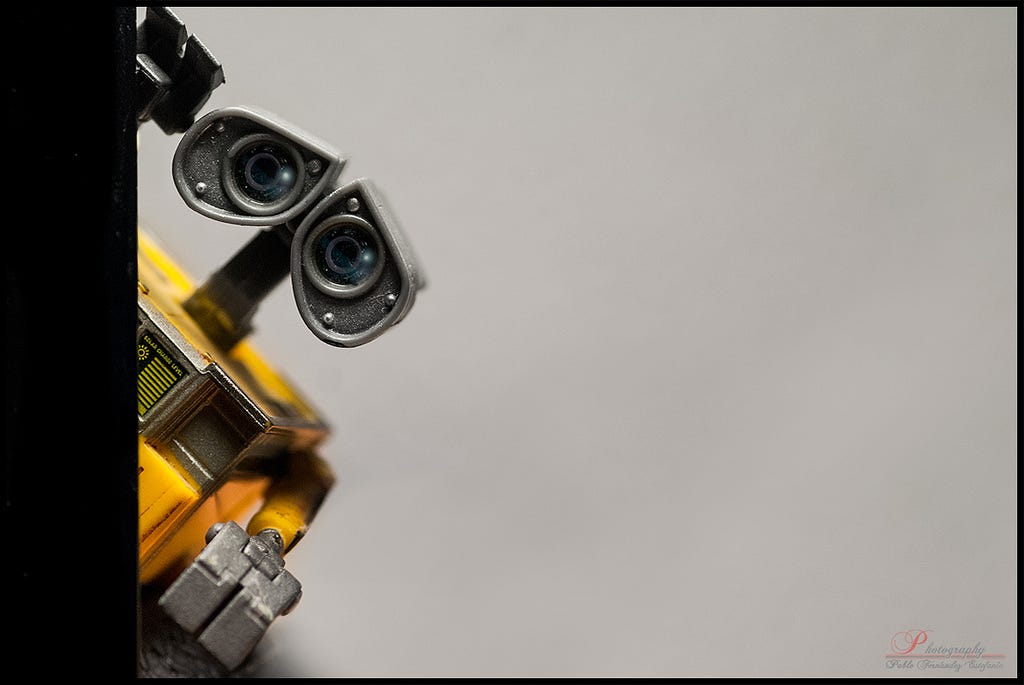
Under a patina of platitudes,[27] Wall-E deals in moral grayness: Is it okay for the audience, an audience of mostly children no less, to root for the movie’s robotic heroes, Wall-E and Eve, both of whom are unapologetically selfish?[28] This is a pro-selfishness movie, is what I’m saying. There’s no need for altruism, goes the message. You don’t need to waste time thinking about other people, you see, because your needs will magically align with those of everyone else. You can be selfish and you can be good, so you’re all right.
By encouraging ambivalence and strong responses, Wall-E demands to be taken seriously.
Wall-E the robot is cute and funny, and he screeps and blizzles in ways that would make R2D2 turn purple with envy. But he is also thoroughly self-absorbed, not unlike the heroes of more “adult” movies like Forrest Gump and The Curious Case of Benjamin Button. Is Wall-E adopting the moral metaphysic of these films or satirizing them? Unclear, at least to me. Either way, its message is now problematic, at best controversial and at worst pernicious.[29] This is a strength, not a weakness. By encouraging ambivalence and strong responses, Wall-E demands to be taken seriously.
[27] Best reflected in Captain McCrea’s heartfelt “I don’t want to survive, I want to live!” I only recently put two-and-two together and figured out Captain McCrea was voiced by Jeff Garlin, the dad from The Goldbergs. Also, the survive/live line is uttered by Chiwetel Ejiofor playing Solomon Northrup in Twelve Years a Slave. Movies are like onions. So many layers!
[28] You don’t believe it, do you? Think about the key scene in the movie. Wall-E has been wounded and lies dying in the Axiom’s garbage dumpster. Eve tries desperately to help him but to no avail. She must decide whether to stay with her beloved or follow her directive, to abandon him and use the plant to save the world. Eve chooses the former, she will stay with Wall-E, damn the consequences for the rest of the humans and robots on the ship. But wait, Wall-E, slowly, painfully, brings himself to the plant and hands it to Eve. Take it, he gestures. Eve shakes her head. And then Wall-E twists his face in a way that Eve recognizes, “if you take the ship back to Earth,” he reminds her by the movement of his binocular-shaped eyebrows, “we can use the spare parts I’ve stored to repair me. You must save the world, in order to save me!” And that’s exactly what happens.
[29] Traditional morality almost always teaches that selfishness is bad. So do Immanuel Kant and John Stuart Mill, and they would know. Kant’s notion of “categorical imperative” demands that the right thing to do be always what you would want anybody else in the same situation to do. Mill’s “utilitarianism” determines the right thing by calculating the amount of happiness that can come out of the alternatives course of action, except that you’re not allowed to think about your own happiness, but about that of everyone involved. Both Kant and Mill, then, subscribe to the core of Biblical morality, the Golden Rule: treat other people as if they’re as important as you. Wall-E and Eve’s intended actions were immoral because they only thought about themselves. And remember that you can’t argue that all’s well that ends well, since all the humans die in the end because of microgravity.
But wait. Isn’t Golden-Rule morality totally unrealistic? Nobody can be reasonably expected to be completely selfless. That’s why religion has to offer divine reward to good people. Kant and Mill, as it happens, both agree with that. They believe that good people are good because they have been trained to feel good when they do good things. In other words, good people are good because it makes them happy, and so are, deep down, acting selfishly. It’s true. Buy me a beer sometime and I’ll show you. So Wall-E and Eve, who were just trying to be happy, might have been good after all. See how much there is to think about just because a pair of binoculars on threads wanted to get it on with a flying iPhone?
Say my kids actually pay attention to what the movies they’re watching are actually telling them, and they realize that the two main lessons they are given over and over — “always follow your heart” and “always be loyal to your family” — can’t always coexist harmoniously.

Or say my kids actually pay attention to what the movies they’re watching are actually telling them, and they realize that the two main lessons they are given over and over — “always follow your heart” and “always be loyal to your family” — can’t always coexist harmoniously.[30] That, say, duty should sometimes overrule personal preference, but determining when this is the case is problematic to say the least, particularly so in our era of instant access to unlimited information, of video games that surpass reality in every way but the ones that matter, of socially-condoned self absorption.[31] I could easily conjure for them the dilemmas in The Little Mermaid or Mulan, both of which deal explicitly with this tension between self and other. The problem is that both of those movies are full of shit, albeit with fantastic tunes. Follow your heart, they say, and everything will be all right. Follow your heart, and all conflicts within as well as without will be resolved. No, sorry. We’re not doing that. We’re bringing out the BFGs, the Holy Trinity of children’s films: the Toy Story series.[32]
[30] The belief that the different goods in the world are often in irreconcilable conflict with each other — as in, the more freedom you have the less equality, and vice-versa — is called “agonism.” Just in case you’ve run out of ways to impress your friends at parties.
[31] Social conservatives have one thing going for them: Too much freedom is bad for us. And when social institutions disintegrate under the weight of freedom, and the technologies that enable that freedom, then people become aimless and apathetic and dangerous. There are scientific studies that show that too many cereal options produce harmful psychological effects. The problem is that so-cons wouldn’t be caught dead citing a scientific study, having embraced anti-intellectualism as the basis of their political ideology.
[32] In the world of the Toy Story films, toys are alive. They can move and act and have lives of their own, and relationships with each other. Horribly, in the presence of human beings they must pretend to be inert, and let themselves be manhandled and mutilated in the worst sorts of ways. The source of this rule is unexplained, but there’s no doubt that a toy’s greatest pleasure and primary aim in life, analogous to the directives for Wall-E’s robots, is to belong to a child and be loved and played with (and I’m sorry but I can’t make that not sound dirty in my head).
The source of this rule is unexplained, but there’s no doubt that a toy’s greatest pleasure and primary aim in life, analogous to the directives for Wall-E’s robots, is to belong to a child and be loved and played with (and I’m sorry but I can’t make that not sound dirty in my head).
In the first Toy Story the action is focused on the favorite playthings of a ten-year-old named Andy. Their leader is Woody, a cloth-and-cotton old-timey cowboy who, somehow, despite being a fifties-era toy in the room of a boy living in the nineties, is Andy’s favorite. The core group includes Mr. Potato Head (Don Rickles), Slinky Dog (Jim Varney), Rex the cowardly dinosaur (Vizz… ehm… Wallace Shawn), and Hamm the piggy bank (John Ratzenberger). (I’m telling you who does the voices because that’s a holy-crap!-level ensemble.) Needless to say, they all have hilarious lines that echo in my house whenever they populate my television screen. The only girl toy of note is a china Little Bo Beep (poor, wasted Annie Potts), who exists solely to wind Woody’s analog insides into improbable knots of Platonic desire. She has no funny lines.
The plot involves the arrival of a new toy, Buzz Lightyear, Space Ranger, who does not know he’s a toy and behaves as if he is actually a Space Ranger, but nevertheless crumples to the ground whenever Andy enters the room. Woody and Buzz, due to the latter’s stubborn and unacceptable desire to be awesome, become separated from Andy and must escape from the clutches of Sid, the evil boy who doesn’t take care of his toys.
In the second one, Woody is stolen by a toy collector with a poultry fetish, who intends to sell a set of old-timey cowboy toys from the fifties to a museum, where they’ll be put on permanent exhibit. The third one deals with Andy’s impending departure for college and the uncertain future that awaits the toys that have not been broken, thrown away, given away, or lost. It’s about death.
An indisputable asset of all three movies is the presence of the three-eyed “alien” toys, first rescued from a claw machine. They’re mindless, ignorant religious fundamentalist and thus hilarious.

Much like the robots in Wall-E, the toys in Toy Story are persons in every way except for physical appearance. They think and feel and love and have hopes and fears and dreams. Their existential condition is meant to be as morally significant as that of the human characters. Except that it’s much, much more horrible. They are obligated by their very essence of toyness to be owned, to be under the total control of another person (their “kid”), except that the other person doesn’t know they’re alive.[33]
Their existential condition is meant to be as morally significant as that of the human characters. Except that it’s much, much more horrible.
So in the first one Woody crushes Buzz’s dreams and indoctrinates him into the ultimate desirability of belonging to somebody else. In the second one Woody fights to ruin the plans of a group of toys who want to be taken care of forever, rather than destroyed and lost by some moronic child, and indoctrinates Jesse the cowgirl into the ultimate desirability of belonging to somebody else (not surprisingly, Buzz and Jesse become an item). And in the third one Woody faces a tyrant who, through admittedly authoritarian and nepotistic policies, is trying to create a safe space of self-determination for toys. Our hero is forced to remind all of his friends over and over, even in the face of obliteration by dumpster furnace, of the ultimate desirability of belonging to somebody else.[34]
That’s right. The Toy Story series is pro-slavery (Andy’s toys are branded with their master’s name on the bottom of their shoes) and Woody the cowboy is nothing but a toy Uncle Tom.[35]
[33] If a kid knows her toys are sentient beings, then naturally she can’t “own” them. That would be wrong. In the same way that it’s wrong for Hugh Jackman to kill all the Hugh Jackman clones he creates for his magic act in The Prestige, and it’s wrong for us to kill cows, grind their flesh, shape it into patties and eat it as burgers if Peter Singer convinces us that cows are people. The Western world abandoned slavery when it internalized the idea that non-white people were just like white people except not white. This, unfortunately, only happened following many centuries of people engaging in the slow and painstaking process of looking at what was right in front of their fucking faces. I can’t wait for my kids to be old enough to watch Blade Runner and Ex Machina, by the way.
[34] Aristotle believed that some people were just born to be slaves. Here’s his argument: slavery is such a horrible, unbearable condition, that a normal human being who found himself a slave would not hesitate to kill himself. Any slave who does not kill himself is therefore inherently predisposed to not mind being a slave. Albert Camus countered that, for all people, the only question that bears asking is “why shouldn’t I just kill myself right now?” They were both, by most accounts, lovely guys.
[35] In case you don’t know, because it used to be read in all middle-schools and high-schools in America but these days is no longer, possibly because its characters are morally complicated beings rather than straightforward heroes and villains in a slavery-is-bad oversimplified fantasy, Uncle Tom’s Cabin is the story of the relationship between a white, slave-owning family, the Shelbys, and several of their slaves, most notably Uncle Tom himself, who, despite being treated as infrahuman and having his family torn to pieces, remains loyal to his master to the very end.

This isn’t, like, technically the case, obviously, insofar as the filmmakers and the parents and the children understand that this is a fantasy in which inanimate objects come to life and they are not meant to represent real human beings that anybody should expect to encounter any time soon. Having said that, the series is encouraging complex, out-of-the-box moral thinking, identification with creatures who might seem familiar but whose internal life is completely alien to us, and a serious examination of what freedom and family entail for finite beings of plastic and flesh with very dismal long-term prospects.
But why should the toys give a shit about Andy’s proper cognitive development?
Is Woody a hero? Why is he a hero? He’s certainly a devoted family man, but he understands the family as centered squarely on the father, I mean, the kid. Is Woody’s unbreakable loyalty perhaps related to the fact that he’s the kid’s favorite? Woody wastes no thought on those who have been “lost along the way,” even if some of them may still be languishing forgotten on the back of some easily-reached-for-mobile-living-intelligent-creatures closet. All he cares about is Andy, his kid, and he willingly risks the safety of his peers to insure Andy gets some additional minutes of imaginative play. Because that’s what makes you good, possessing that very specific, anarchic yet unthreatening, form of imagination. But why should the toys give a shit about Andy’s proper cognitive development?
And then there’s this: the toys can escape if they want to! The end of the first Toy Story establishes indisputably that toys, if they so chose, could move and talk in front of their human owners. Woody, of all toys, makes the decision to do this so he and Buzz can escape from Sid’s room.[36] The results speak for themselves. Sid is flummoxed and terrified and the plan a complete success. Why don’t toys rise up against their human overlords like the apes in Planet of the Apes or the toys in Small Soldiers[37]? Where is the toy Ghandi? The toy Martin Luther King? Stinky Pete the Prospector and Lotso Huggin’ Bear show that the toys can reject their directive as easily as Eve in Wall-E. Why don’t they pretend to be possessed by the Devil and persuade a few million idiot humans to worship them[38]?
See? So many layers! I can’t in good conscience deprive my children of such wellsprings of intricate moral questioning, nor can I deprive them of the opportunity to learn the perfect line to dismiss away their overbearing nerd of a father. They just need look me up and down and say: “You are a sad, strange little man, and you have my pity.”[39]
[36] While we’re at it, why is Sid a villain? He doesn’t know the toys are alive. Yes, he likes to break them apart and reconnect them in unusual ways to create mutant toy hybrids. Yes, he likes to attach them to explosive devises and shoot them up into the sky. But why are these bad things? Why is Sid not the curious, inquisitive boy who’ll grow up to be a rocket engineer, while Andy, being pathologically attached to his mass-produced possessions, will grow up to be a hoarder? Equally worrisome is the fact that Andy, at eighteen, is still inordinately attached to his little-boy toys, and this is depicted as an attractive facet of his personality instead of as a symptom of gerascophobia.
[37] In Small Soldiers the toys all behave as if they are persons, the good ones and the bad ones. Nobody ever yells at them “You are a toy! You are a child’s plaything!” They’re all Buzz Lightyear before he turned slavery apologist.
[38] Hey, Donald Trump did it.
[39] Tim Allen as Buzz. So good.







